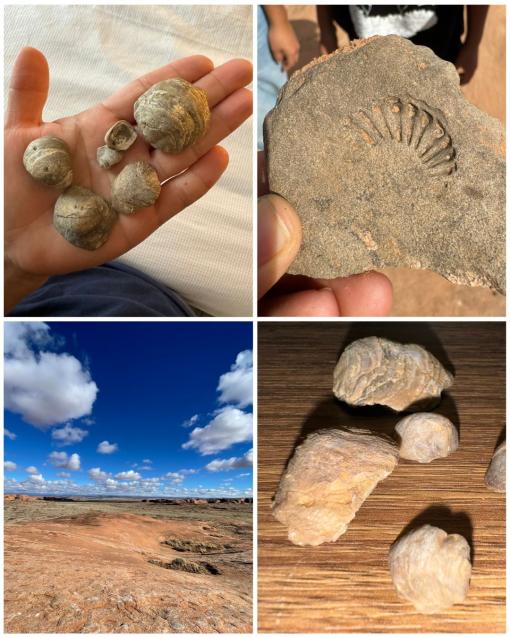Ancient Ocean Memories

Written by Science Communication Fellow Kim Etsitty
While exploring the Palau National Marine Sanctuary, I thought a lot about my home in an ancient ocean, now hundreds of miles from the modern shorelines. Read more about all of our connections to modern and past oceans.
Whether you live in the coastal regions or the desert, we all interact with the ocean daily. The ocean covers about 70% of the Earth's surface, producing 70% of our oxygen. I am from the four-corner region of the United States, which consists of Arizona, Utah, Colorado, and New Mexico, geologically known as the Colorado Plateau. Still, I know it as Diné Bikéyah (home). The Navajo Nation, with its diverse range of stunning landforms, is a place of awe-inspiring beauty. Some of my favorite key features include deep canyons such as Canyon de Chelly, which were carved by rivers and streams, revealing layers of sedimentary rocks that tell the area's geological history. Another key feature would be the ancient volcanic field that makes up the Chuska Mountain, reaching over 10,000 feet, which is significant geologically and culturally. My third favorite feature would be the mesa and plateaus because this was my backyard. These flat-topped hills with steep sides have been shaped by volcanic activity and erosion for millions of years.

The Colorado Plateau is extraordinary and home to the Diné people; we are protected within this region by our four sacred mountains.
- Blanca Peak, the sacred mountain of the east– Sisnaajiní, "the dawn," or "white shell mountain." Associated with the color white.
- Mount Taylor, the sacred mountain of the south,– Tsoodził, "turquoise mountain," or "blue bead." Associated with the color blue.
- San Francisco Peak, the sacred mountain of the west. – Dook'o'oosłííd, "the summit which never melts" or "abalone shell mountain." Associated with the color yellow.
- Hesperus Mountain, the sacred mountain of the north – Dibé Nitsaa, "big sheep." Associated with the color black.
The richness of our land and culture would not have been possible without our mother, tó (water), the stunning landscapes and geological formations once submerged under ancient oceans. During the late Paleozoic Era, roughly 300 million years ago, seas covered parts of the Colorado Plateau. These seas were home to diverse marine life, including brachiopods, trilobites, and other ancient organisms. The land tells stories of these ancient oceans, the sedimentary rocks that accumulated over millions of years and are now visible in the plateau's canyons and cliffs. The story of the underwater past was home to many marine creatures, such as ammonites and mollusks, and is evident through the area's fossils. The geological uplift of the Colorado Plateau occurred during the Laramide orogeny; this is where mountain building started to form 40 to 70 million years ago, exposing the ancient marine sediments and creating beautiful landscapes.
Tó asdzáán nihimá, our mother ocean, has played a pivotal role in shaping the geological history and culture of the land. I am deeply grateful for its influence and often find myself in awe of the gentle reminders it leaves behind in the form of marine fossils scattered across the land.
To explore more about the ancient boundaries of oceans and land check out this visualizer from Dinosaur Database.
